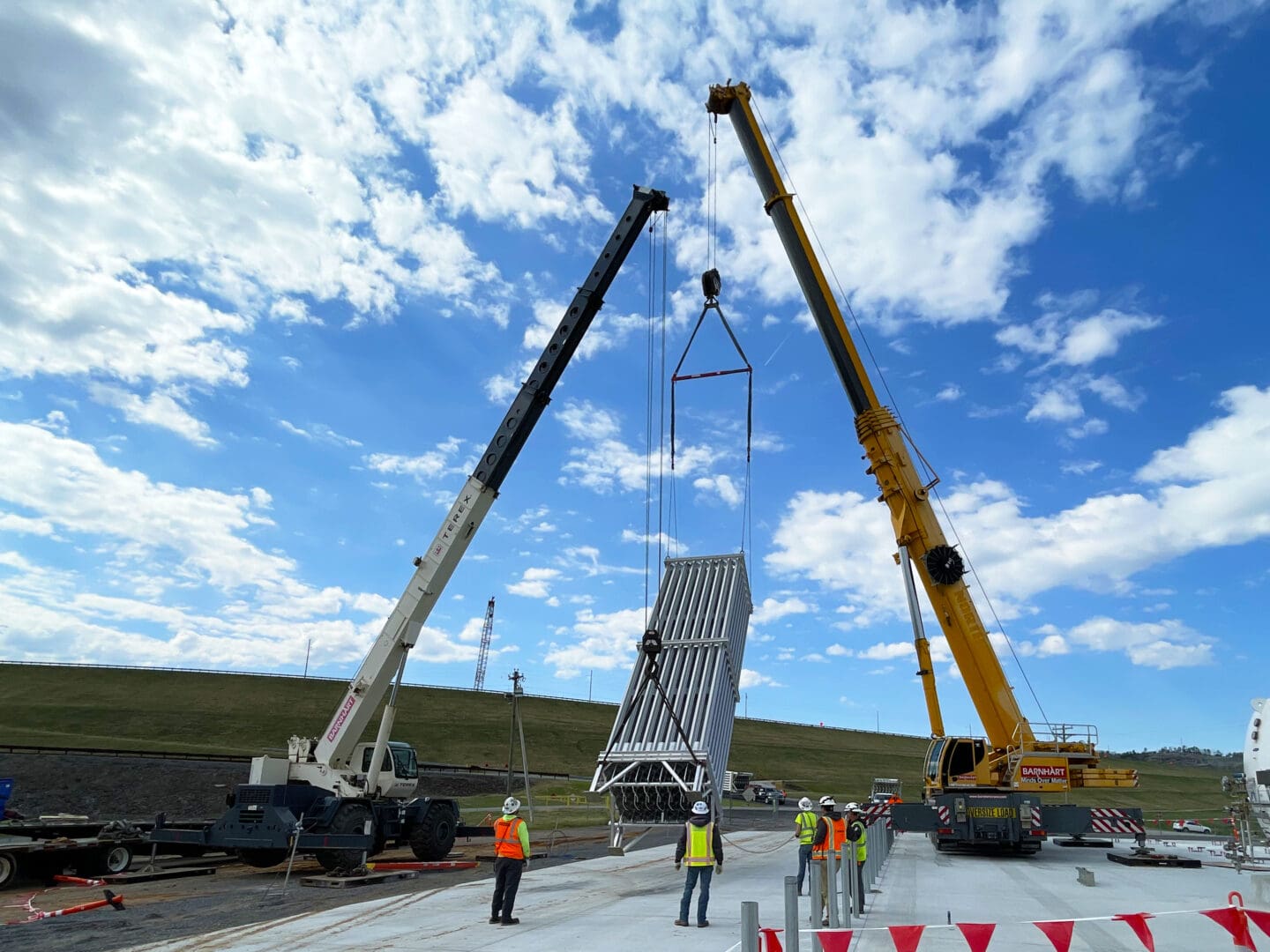JAMESTOWN, Ky. – The U.S. Army Corps of Engineers Nashville District is taking a major step toward enhancing hydropower generation and protecting water quality with the installation of an oxygen diffusion system at Wolf Creek Dam.
The project, currently under construction, includes the installation of four 15,000-gallon liquid oxygen tanks and eight vaporizer banks designed to inject oxygen into the upstream waters of Lake Cumberland. This innovative system will allow the dam’s hydropower plant to operate more efficiently during times of year when dissolved oxygen (DO) levels in the water drop below environmental targets.
“This system essentially acts like a massive fish tank bubbler,” said Stephen Logan, project manager for the U.S. Army Corps of Engineers Nashville District. “It increases dissolved oxygen in the reservoir, which improves water quality downstream and allows us to generate more hydropower while meeting dissolved oxygen targets.”
Wolf Creek Dam’s six turbine generators produce renewable energy year-round, but from September through November, warmer temperatures reduce dissolved oxygen levels in Lake Cumberland. This can force the dam to “sluice” water—release it without generating power—to protect aquatic life and meet water quality objectives. That means lost generation capacity during peak grid demand.
The new cryogenic system will change that.
Liquid oxygen stored in extremely low-temperature tanks is passed through vaporizers, which slowly increases the fluid’s temperature changing oxygen from a liquid state into a gaseous state. That oxygen is then delivered through a header manifold to diffusion lines placed in the reservoir. By increasing dissolved oxygen levels before the water reaches the turbines, more oxygen is absorbed into the water rather than escaping into the atmosphere. The oxygen-enriched water then flows through the turbines and continues downstream, helping to maintain water quality while reducing the need for sluicing.
“This will be a game-changer during the low-DO season,” Logan said. “It allows us to support full power plant operation while still meeting our dissolved oxygen targets.”
The Corps aims to maintain a minimum of five milligrams per liter (mg/l) of dissolved oxygen, with a daily average target of six mg/l. With the new system in place, hydropower output during the fall months is expected to increase significantly—especially once the power plant undergoes scheduled rehabilitation, which includes new transformers, generator rewinds, and upgraded turbine runners.
The cryogenic facility is funded through the Section 212 customer funded program. Construction is being led by contractor Brasfield & Gorrie, with support from the Nashville District’s Design and Construction Branches, and Water Management Section. The project is also coordinated heavily with the Tennessee Valley Authority (TVA), a key partner in regional hydropower and water management.
The cryogenic facility is scheduled for completion in September 2025, including the essential operational diffusion lines in the forebay. Additional supportive diffusion line installation may extend into the fall.
“This project supports our dual mission of delivering clean, renewable energy while being responsible stewards of the environment,” Logan said. “It ensures that we can continue generating hydropower while protecting the aquatic ecosystem that depends on healthy water conditions downstream.”
The public can obtain news, updates and information from the U.S. Army Corps of Engineers Nashville District on the district’s website at https://www.lrd.usace.army.mil/About/Districts/Nashville-District/, on Facebook at www.facebook.com/nashvillecorps and on X (formerly Twitter) at www.x.com/nashvillecorps. Follow us on LinkedIn for the latest Nashville District employment and contracting opportunities at https://www.linkedin.com/company/u-s-army-corps-of-engineers-nashville-district.



